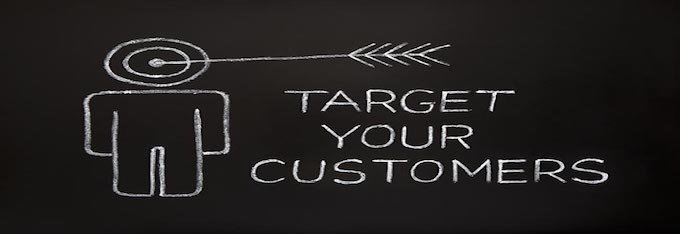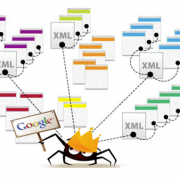Am I creating quality content that solves the searcher’s problems?
Every search for something begins with a problem. It’s the reason you’re reading this blog right now––you have a problem that needs a solution. Maybe your problem is small and you just need a little help on how to create great content. Great––but it’s still a problem because it means a few different things:
Maybe you’re not already creating awesome content and you need to to sell your product.
Maybe your revenue is down and you’re looking for ways to improve sales.
Maybe someone told you your copywriter stinks and it’s time you took matters into your own hands.
Maybe you’re your own copywriter.
Don’t worry, you’ve come to the best place to find out if:
- You’re already producing awesome content (you might be, in which case you’ll be nodding your head as you read this)
- Your content is readable but not clickable
- Your content stinks and how to make it better
Now, if you’re not a writer and you don’t like to write, don’t waste your own time. Get a copywriter. Pay for a good copywriter. And trust us, price usually indicates quality so low ballin’ on the Fiverr side of things may get you a crapload of content for the cost of double-fat chai latte at your local barista, but it won’t be very good.
Several sources claim that quality content is the number one ranking factor. That’s right, NUMBER ONE. That means that content is more important than anything else on your site.
The #1 Most Important Question You Need to Ask Yourself Before You Write Anything
Who are you writing for––the person or the machine?
Well, both actually. And we’ll get there in a minute but it’s super important that you know “the machine” is much, much more like a person these days than ever before.
Back in the days of yesteryear, Google didn’t care so much about content, their algorithm paid attention only to having content with highly searched terms up on a page. Times are different now. Google will actually penalize sites that stuff keywords into content, even if that content reads sensibly enough. Sophisticated algorithms are now able to assess content quality––meaning, relevance, and where and how often you use certain keywords through a script (keyword density and frequency).
So, start with the person––your ideal customer––and write content that she (or he) cares about, that speaks directly to her, that solves her problem. Don’t write a sales pitch (even though selling is your goal).
Remember this:
Writing and Writing for SEO: What’s the Difference?
Straightforward copywriting is the art of using words to sell a product or service. A copywriter knows how to use words strategically to engage a reader and persuade her to purchase whatever you’re selling.
An SEO copywriter employs the same tenants, except she tailors the copy for an online presence, optimizing it for Google The tricky bit about SEO writing is striking a balance between optimizing for a search engine and serving your potential customer. You need to do both.
Write Clickable Headlines
You want to spend more time putting together a smashing headline than you do on your entire copy. Why? Because the title is what engages or repels readers. If your headline makes people snore, they’re not going to care what your page is about and they’ll bounce away.
If you’re walking the plank and doing your own copywriting, here are a few tips for writing a title that converts:
- Lead with a 6-7 word phrase
- Make it clear, snappy, and simple
- Use adjectives, strategically
- Promise to solve a problem
- Use numbers wherever possible
Maybe that sounds like a lot to cover in just a few words but it’s easier than you think, especially when you get the hang of it.
For example, you’re writing a blog about dog training for your pet niche site.
Instead of: “Training Your Dog”
Try: “6 Easy Ways to Make your Dog Smarter”
See the difference? You’re speaking to the ultimate goal of the reader. No one wants a dumb dog, right? That’s why we train them, and it makes our lives “easy”.
“On the average, five times as many people read the headline as read the body copy. When you have written your headline, you have spent eighty cents out of your dollar.” – David Ogilvy |
If you’re stuck, check out copyblogger’s 10 Sure-Fire Headline Formulas That Work for some ideas.
Deliver on Your Headline’s Promise
Beef your content without the bloat. You want to publish content that is meaty, meaning it satisfies the reader with lots of useful information. Google penalizes sites with thin content––only there as a base for keywords, which is why 1000 words is a recommended average for any piece of content. Build your content around a keyword, but ensure your copy reads smoothly and engages the reader.
Make your content compelling by putting the most important information first. In The Copy Cure, Marie Forleo refers to the first words of a sentence or paragraph the corner real-estate spot. Fill it wisely.
Link to Authority Sites
Why would you want to send your reader elsewhere for information? Isn’t the point to keep potential customers on your page?
There are two schools of thought. At Logical Mix, we want to help people solve their problems. If someone can do that better than us, then people should know about it. Keep in mind that selfishly coveting your customer and withholding useful information from them may do harm than good.
Linking to authority sites (like we did back there with copyblogger) also shows social proof, that you’re connected, sociable, value good content and want to share it around. Not only does this put you in Google’s good books, but it helps your customer––and they’ll remember you.
The Tail End…
Remember from Step One, always start with keyword research. It’s how you know what people people’s problems are and therefore, what they’re searching for. Then use free tools like Google Analytics to find out what part of your site is getting the most traffic and why. Use that info to generate new content to improve user experience.
And if you can’t write, don’t enjoy it, or don’t care enough to try, get a copy writer. The cost is worth the result.
Photo credit: Neil Patel









